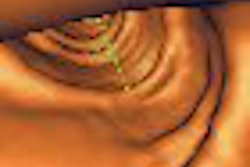
Merge Healthcare subsidiary Cedara of Mississauga, Ontario, will showcase its line of advanced visualization software, ranging from calcium scoring software to application development toolkits.
A major highlight in the company's RSNA booth will be the launch of Cedara Clinical Control Center (C4), a new work-in-progress software architecture for managing advanced visualization data. The platform allows clinical applications and plug-ins to be integrated into a single workstation, thus sharing system resources, the company said.

C4 enables users to set up configurable protocols that can be used to automatically launch viewing applications from a single patient worklist. The software follows the new DICOM plug-in specification, and software development kits (SDKs) are available for OEM integration.
On the application side, the company will show its Cedara Calscore CT calcium scoring application integrated into a PACS environment using the C4 technology. Calscore users can generate individual calcium scores for patients using Agatston, volume, and mass scoring methods, and basic features include user-definable color schemes, report generation, and Hounsfield thresholds.
Cedara IlumiView is a tool for reviewing and reporting colon and luminal studies. The application uses CT images to create virtual colonoscopy studies, record findings, and automatically generate reports.
Features include support for 2D or 3D primary review, simultaneous comparison of 2D supine and prone datasets, the ability to set 3D "watchpoints" to investigate suspicious polyps, and automatic centerline generation and simulated 3D endoscopic fly-throughs. Cedara will show IlumiView integrated into a PACS environment with its C4 technology.
For orthopedic specialists, the company will show enhancements to its Cedara OrthoWorks family of tools for surgical planning. The OrthoWorks suite is designed to go beyond digital templating to support advanced diagnosis, automation, and workflow, the company said. OrthoWorks can be integrated into an existing PACS network or run as a standalone workstation, and the software has U.S. Food and Drug Administration (FDA) 510(k) clearance.
Cedara PrimeLung is the company's lung nodule visualization and analysis application, and at this month's meeting Cedara will demonstrate the software integrated with a PACS environment using C4. The software has FDA clearance and includes viewing tools, nodule segmentation, 3D views, follow-up capabilities, and report generation.
On the development side, Cedara OpenEyes is a software development platform designed to enable engineers to quickly and efficiently develop new software applications. It provides a single uniform set of controls and development interfaces, thus shielding users from the complexities of deep code development, the company said.
The software integrates into the Java and Microsoft .Net environments, and can be used to program applications ranging from medical consoles to clinical packages to PACS workstations. Cedara engineers have used the software to create a number of the company's own applications, the firm said.
Also look for Cedara to highlight its custom engineering services business, which it offers to OEMs and other customers to speed up application development.
By Brian Casey
AuntMinnie.com staff writer
November 8, 2006
Copyright © 2006 AuntMinnie.com



















